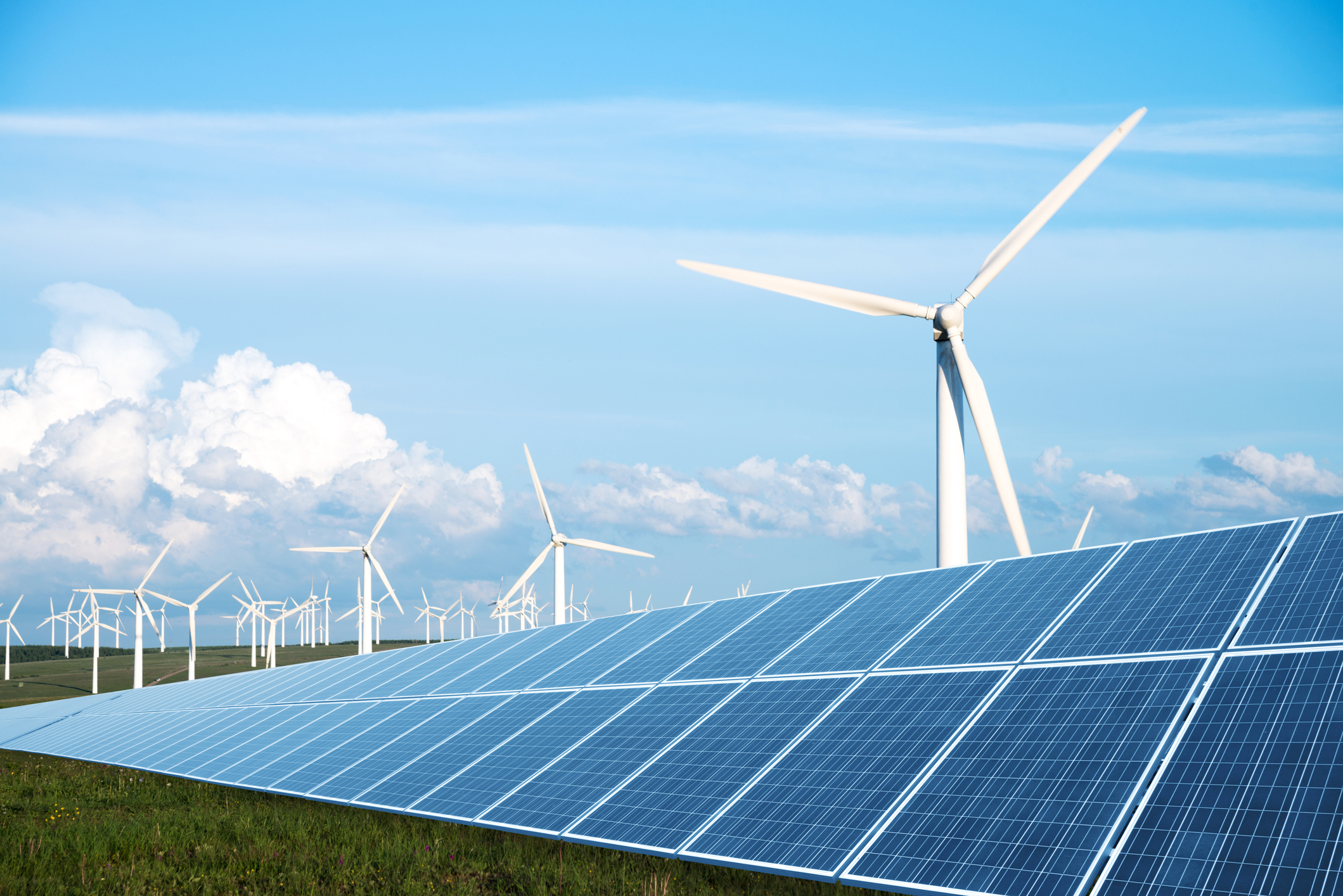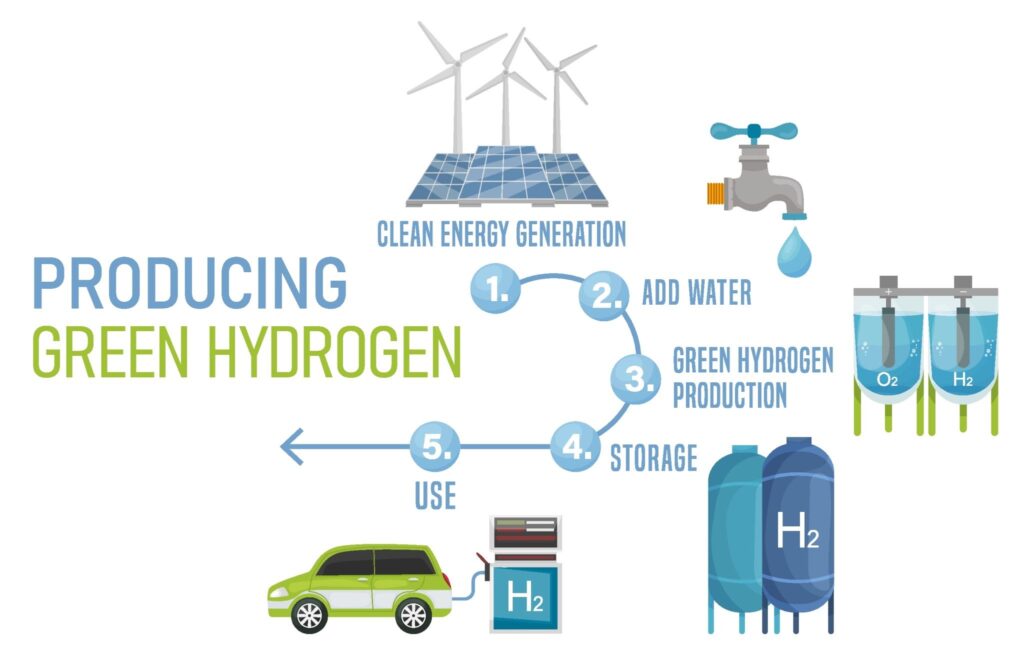
As the world grapples with the challenges posed by climate change and the finite nature of fossil fuels, large-scale green energy production has emerged as a vital component of a sustainable future. Green Energy, derived from renewable sources such as solar, wind, hydro, and geothermal, offers a pathway to reducing carbon emissions, ensuring energy security, and fostering economic growth. The future of large-scale green energy production is poised for significant advancements, driven by technological innovations, policy shifts, and growing global awareness of the need for sustainable development.
This blog will explore the current state of large-scale green energy production, the technological advancements shaping its future, the challenges, and the potential solutions that can help achieve a sustainable energy future.
The Current State of Large-Scale Green Energy Production
Green energy production has seen remarkable growth over the past decade, with renewable energy sources becoming increasingly competitive with traditional fossil fuels. According to the International Energy Agency (IEA), renewable Energy accounted for nearly 29% of global electricity generation in 2020, with solar and wind Energy leading the charge. Technological advancements, supportive policies, and increased investment in renewable energy infrastructure have driven this growth.
- Solar Energy: Solar Energy has become one of the fastest-growing sources of electricity worldwide. Large-scale solar photovoltaic (PV) installations have seen significant cost reductions, making solar power more accessible and economically viable. Solar Energy is now cheaper in some regions than coal or natural gas, making it a preferred choice for new power generation projects.
- Wind Energy: Wind energy has also experienced substantial growth, particularly in regions with favorable wind conditions. Offshore wind farms have gained prominence, offering higher capacity factors and reduced environmental impacts compared to onshore wind farms. Advances in turbine technology have supported the expansion of wind energy, allowing for larger and more efficient turbines.
- Hydropower: Hydropower remains the largest source of renewable electricity, contributing over 16% of global electricity generation. While large-scale hydropower projects have been successful in many regions, concerns about environmental and social impacts have led to increased interest in small-scale hydropower and pumped storage systems.
- Geothermal Energy: Geothermal Energy, though less prevalent than solar and wind, offers a reliable and consistent source of electricity. Large-scale geothermal projects have been developed in regions with significant geothermal resources, such as Iceland, the United States, and the Philippines.
Global Initiatives and Agreements
Global initiatives and agreements, such as the Paris Agreement, have played a crucial role in driving the adoption of green Energy. Countries worldwide have set ambitious targets for reducing carbon emissions and increasing the share of renewable Energy in their energy mix. These commitments have spurred investment in large-scale green energy projects and encouraged the development of new technologies.
Technological Advancements Shaping the Future
Technological advancements that enhance efficiency, reduce costs, and address the challenges associated with renewable energy integration will heavily influence the future of large-scale green energy production.
- Advanced Solar Technologies: The development of next-generation solar technologies, such as perovskite solar cells, bifacial modules, and concentrated solar power (CSP), holds the promise of further reducing the cost of solar Energy and increasing its efficiency. Perovskite solar cells, in particular, have garnered attention for their potential to achieve higher efficiencies at lower production costs than traditional silicon-based solar cells.
- Wind Turbine Innovations: Wind energy is set to benefit from turbine design and materials innovations. Larger turbines with longer blades and advanced materials will enable higher energy capture and lower the cost of wind power. Additionally, floating offshore wind farms, which can be deployed in deeper waters, have the potential to unlock vast new areas for wind energy development.
- Energy Storage Solutions: One of the critical challenges facing large-scale green energy production is the intermittency of renewable energy sources. Energy storage technologies, such as advanced batteries, pumped hydro storage, and thermal energy storage, are essential for balancing supply and demand and ensuring grid stability. Innovations in energy storage, including the development of solid-state batteries and long-duration storage systems, will play a key role in enabling the widespread adoption of Renewable Energy.
- Smart Grid Technologies: Integrating renewable Energy into the grid requires advanced grid management systems that can handle the variability of renewable power generation. Smart grid technologies, including real-time monitoring, demand response, and distributed energy resources (DERs), will enable more efficient and resilient power grids. Using artificial intelligence (AI) and machine learning (ML) in grid management will further enhance the ability to predict and respond to fluctuations in renewable energy generation.
Hydrogen Production and Storage

Green hydrogen, produced through electrolysis using renewable Energy, is emerging as a critical component of the future energy landscape. Hydrogen can be used as a clean fuel for transportation, industrial processes, and energy storage. Large-scale green hydrogen production and storage could solve the challenges of decarbonizing sectors that are difficult to electrify, such as heavy industry and long-haul transportation.
Challenges in Large-Scale Green Energy Production
Despite the progress made in green energy production, several challenges must be addressed before transitioning to a fully renewable energy system.
- Intermittency and Grid Integration: The intermittent nature of solar and wind Energy presents challenges for maintaining a stable and reliable power supply. While energy storage and smart grid technologies offer potential solutions, the large-scale deployment of these systems requires significant investment and infrastructure development.
- Land and Resource Use: Large-scale green energy projects often require substantial land and resources, leading to potential conflicts with other land uses, such as agriculture, forestry, and conservation. The siting of renewable energy projects must balance the need for clean Energy with environmental and social considerations.
- Supply Chain and Material Constraints: Renewable energy technologies, such as solar panels, wind turbines, and batteries, rely on a range of critical materials, including rare earth elements and lithium. Ensuring a sustainable and resilient supply chain for these materials is essential for the continued growth of green energy production.
- Policy and Regulatory Barriers: Transitioning to large-scale green energy production requires supportive policies and regulatory frameworks. Inconsistent or outdated policies can create barriers to developing and deploying renewable energy projects. Policymakers must work to create a stable and predictable environment that encourages investment in green Energy.
Public Acceptance and Social Impact
Public acceptance of large-scale green energy projects is crucial for their success. While renewable Energy is generally viewed favorably, concerns about the visual impact, noise, and environmental effects of projects such as wind farms and hydropower dams can lead to opposition. Engaging communities and addressing their concerns through transparent and inclusive processes is essential for overcoming social barriers.
Solutions and Strategies for Overcoming Challenges
To address the challenges facing large-scale green energy production, technological innovation, policy support, and stakeholder engagement are required.
- Diversification of Energy Sources: Diversifying the mix of renewable energy sources can help mitigate the challenges of intermittency and grid integration. By combining solar, wind, hydro, geothermal, and biomass energy, the overall variability of renewable power generation can be reduced, leading to a more stable and reliable energy supply.
- Integrated Energy Systems: Integrated energy systems that combine renewable energy generation, energy storage, and demand management can enhance the power grid’s flexibility and resilience. Microgrids, which operate independently of the main grid, can provide reliable power in remote areas and during grid outages while also facilitating the integration of Renewable Energy.
- Circular Economy for Renewable Energy: Developing a circular economy for renewable energy technologies can help address supply chain and material constraints. This approach involves designing products for durability, reuse, and recycling, reducing the demand for new raw materials and minimizing waste. Recycling materials from decommissioned solar panels, wind turbines, and batteries can contribute to a more sustainable supply chain.
- Supportive Policy Frameworks: Policymakers play a crucial role in enabling the growth of large-scale green energy production. Supportive policies, such as feed-in tariffs, tax incentives, and renewable portfolio standards, can encourage investment in renewable energy projects. Additionally, policies that promote research and development, innovation, and the deployment of advanced technologies are essential for overcoming the technical and economic challenges of green Energy.
Community Engagement and Social Equity
Engaging communities in planning and developing renewable energy projects is essential for ensuring public acceptance and social equity. Transparent decision-making processes that involve local stakeholders can help address concerns and build trust. Additionally, ensuring that the benefits of green Energy, such as job creation and economic development, are shared equitably among all members of society is crucial for a just transition.
The Future of Large-Scale Green Energy Production
Looking ahead, the future of large-scale green energy production is bright, with several trends and innovations set to drive the continued growth of Renewable Energy.
- Decentralization of Energy Production: The future energy landscape will likely shift towards decentralized energy production, where power generation occurs closer to the point of consumption. This approach reduces transmission losses, enhances energy security, and allows for greater integration of renewable energy sources. Decentralized energy systems, such as rooftop solar installations and community wind projects, will be key in transitioning to a sustainable energy future.
- Energy as a Service (EaaS): The concept of Energy as a Service (EaaS) is gaining traction. Energy providers offer integrated solutions that include energy generation, storage, and management. EaaS models enable consumers to access renewable Energy without significant upfront investment, making green Energy more accessible and affordable.
- Digitalization and AI in Energy Management: The digitalization of the energy sector, powered by AI and big data, will revolutionize how Energy is produced, distributed, and consumed. AI-driven energy management systems can optimize the operation of renewable energy assets, predict demand patterns, and enhance grid stability. The integration of digital technologies will enable more efficient and flexible energy systems.
- Global Collaboration for Green Energy: The transition to a global green energy economy will require international collaboration and cooperation. Countries must work together to share knowledge, technology, and resources to accelerate the deployment of Renewable Energy. Global initiatives, such as the International Solar Alliance (ISA) and Mission Innovation, will be crucial in advancing green energy production worldwide.
The Role of Innovation in the Energy Transition
Innovation will be at the heart of the future of large-scale green energy production. Breakthrough technologies, such as fusion energy, advanced nuclear reactors, and next-generation energy storage, could redefine the energy landscape and provide new solutions to green Energy challenges. Continued investment in research and development is essential for unlocking the potential of these innovations.
The future of large-scale green energy production holds immense promise for creating a sustainable, low-carbon energy system that meets the needs of a growing global population. Technological advancements, supportive policies, and international collaboration will drive the continued growth of renewable Energy, making it the cornerstone of the global energy transition.
However, the journey towards a green energy future has its challenges. Addressing the intermittency of renewable Energy, ensuring sustainable resource use, and overcoming social and regulatory barriers will require concerted effort and innovation. By embracing a holistic approach that integrates diverse energy sources, advanced technologies, and inclusive decision-making, we can overcome these challenges and build a resilient and sustainable energy system for the future.
As we look ahead, it is clear that large-scale green energy production will play a central role in shaping the future of our planet. By harnessing the power of renewable Energy, we can create a cleaner, healthier, and more prosperous world for generations to come.


